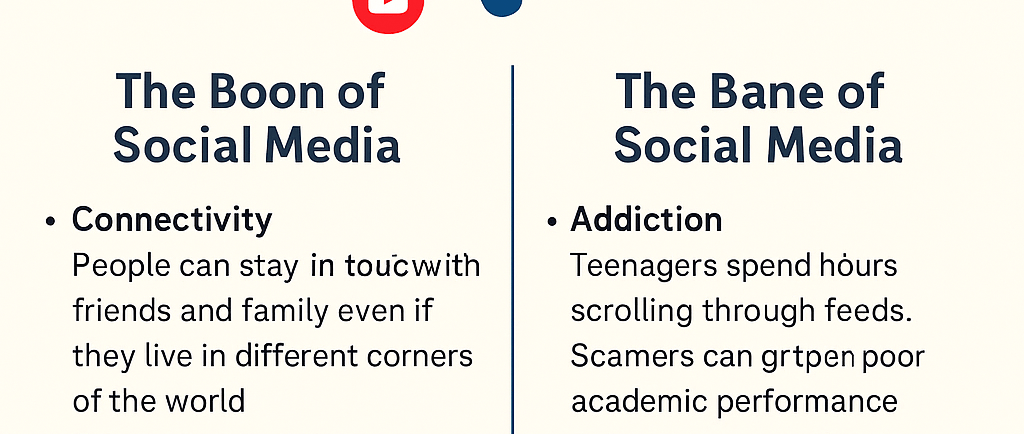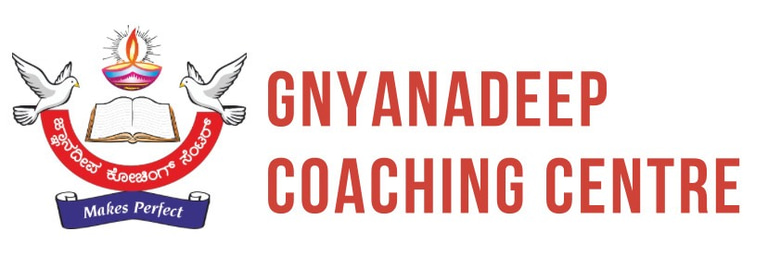Social Media: Bane or Boon For Youth


Social Media: Boon or Bane
In today’s digital age, social media has become an inseparable part of our lives. Platforms like Facebook, Instagram, Twitter, WhatsApp, and YouTube connect billions of people across the world. For students, professionals, and even ordinary citizens, social media provides a space to share ideas, express opinions, and stay updated with global events. However, as much as it has proved to be a boon, it also has its darker side, raising the question: is social media ultimately a boon or a bane?
The Boon of Social Media
One of the greatest advantages of social media is connectivity. People can stay in touch with friends and family even if they live in different corners of the world. Social media has made communication faster, cheaper, and more effective.
It is also a powerful tool for education and awareness. Students can join online study groups, access free learning resources, and even attend live sessions by teachers across the globe. During emergencies such as natural disasters or the COVID-19 pandemic, social media played a crucial role in spreading awareness, sharing safety guidelines, and even helping people in need.
From a career perspective, social media has become an excellent platform for networking and opportunities. Professionals can showcase their skills on platforms like LinkedIn, artists can display their work on Instagram, and entrepreneurs can promote their businesses online at minimal cost. In this way, social media has helped people achieve recognition and financial independence.
Additionally, it gives ordinary citizens a voice. Social issues that were once ignored can now gain attention through campaigns and hashtags, bringing positive changes in society.
The Bane of Social Media
Despite these benefits, social media has serious disadvantages. Addiction is one of the biggest problems. Teenagers, in particular, spend hours scrolling through feeds, often wasting valuable time that could be used for study or physical activities. This addiction can lead to poor academic performance and lack of concentration.
Another harmful effect is the spread of fake news and misinformation. Since anyone can post online, false information spreads quickly and can cause panic, confusion, and even violence.
Cyberbullying is also a growing concern. Many students face online harassment, trolling, or body-shaming, which can severely affect their mental health. Social media often creates unrealistic standards of beauty and success, leading to low self-esteem, anxiety, and even depression among young users.
Moreover, excessive use of social media reduces face-to-face interactions. Instead of enjoying real-life conversations, people are glued to their phones. This weakens personal relationships and creates a sense of isolation.
Conclusion
Social media, like any other tool, has both advantages and disadvantages. When used wisely, it can be a great source of knowledge, entertainment, and opportunity. But when misused, it can become harmful, wasting time and damaging mental health.
Therefore, the answer to whether social media is a boon or bane depends entirely on how we choose to use it. By maintaining balance, limiting screen time, and using social media responsibly, we can turn it into a boon for ourselves and for society.
